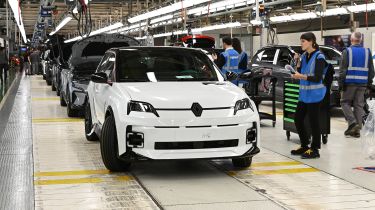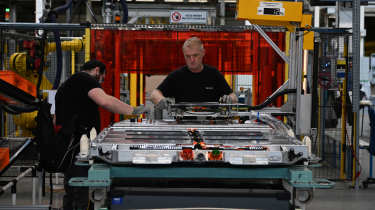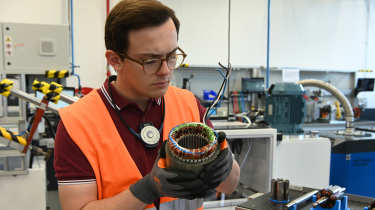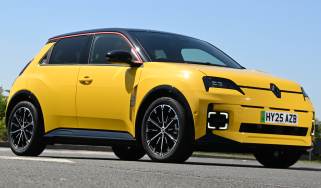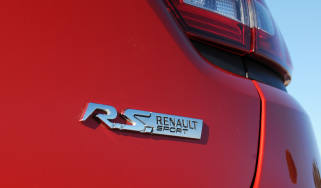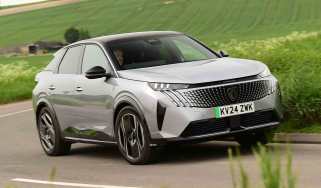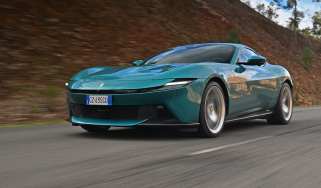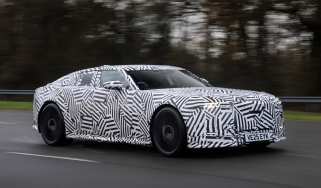Electric motors: how Renault builds the tech to replace the engine
We visit Renault’s Cleon factory, the hub of manufacturing and development of the French firm’s electric motor technology
Blistering acceleration is a given for many of the latest crop of electric cars. If you’ve driven one, than you’ll be fully aware of the instant jolt of forward momentum that’s on offer as soon as you bury your right foot to the floor.
However, something that’s arguably moving even faster is the development of the electric motors that deliver said acceleration. Technology that was once the preserve of milk floats – a class of vehicle that meant the UK had the largest fleet of EVs in the world in the sixties – now sees unassuming electric SUVs deliver the kind of sprint times that could embarrass a supercar.
This kind of developmental leap can be put down to the ingenuity of individuals in places such as Renault’s manufacturing plant in Cleon, France. The factory opened its doors in 1958 and was initially reserved for building gearbox components for the Renault Dauphine saloon. Back then, none of the facility’s staff could have imagined it would now be used to develop and assemble electric motors for the French firm’s growing line-up of fully electric cars.
Since 2015, the factory has been making the powertrain for the Renault Zoe – one of the first mass-market electric cars. Nearly 10 years later, production of the Zoe’s motor continues, but this is being phased out to prioritise Renault’s next generation EVs – primarily the Megane E-Tech and new Renault 5 hatchback.
With only one moving part, you might expect electric motors to have changed very little since the Zoe’s debut in 2013. But the reality is much to the contrary.
For starters, the size of electric motors has shrunk considerably over time. Despite being a pretty small supermini, the Zoe’s motor is relatively large – not far off the size of the internal combustion engine you might find in a Clio, for example. In comparison, the motors fitted to the likes of the Megane E-Tech and Renault 5 are much smaller, although they’re not yet a match for the average toaster.
They’re also significantly more potent. Electric cars are notoriously heavy because of the inherent heft of their batteries, yet one of the elements helping the Renault 5 achieve its comparatively lean 1,372kg minimum dry weight is its electric motor; the R5’s unit weighs nearly half that of the one in the Zoe (80kg as opposed to 150kg). The motor fitted to the Megane E-Tech shares similar technology with the R5, and are even rated up to 217bhp, an increase of 100bhp over the least powerful Zoe.
To achieve such impressive figures, Renault has had to rethink the design and production processes of its electric motors. The company has been outspoken in regards to its reluctance to rely on parts from China, and this is all too obvious when you look at the configuration of its electric motors.
In an attempt to explain without getting overly technical, one of the most important elements of an electric motor is the stator – the cylindrical element that encloses the rotor. This is typically lined with electromagnetic material that creates the electric current which causes the rotor to turn and propel the car.
Most of the stators that are found in electric cars use specialised magnets in order to create the necessary electromagnetic field. However, China has a huge monopoly on these, which means importing them comes with significant cost and emissions.
Instead, Renault has resorted to using copper wire, which is cheaper to acquire and is also much easier to recycle at the end of the motor’s life. In fact, Renault claims copper mechanisms are actually more efficient than their electromagnetic counterparts, which means customers don’t only benefit at the point of sale, but also throughout their ownership.
The copper wire is bound and woven to the stator block in what can only be described as a mesmerising and intricate pirouette performed by several mechanical arms. Renault prides itself on minimising automation, but head of electric motor assembly, Olivier Chambert, explained to us that robots are necessary in this process because of the complexity of the winding process.
This may sound incredibly complicated (and fragile) but electric motors actually contain far fewer parts than an equivalent petrol or diesel engine; the average internal-combustion unit comprises around 360 unique parts, while an electric motor is made up of around 120. Regardless, the price of the power unit itself is typically like-for-like when it comes to petrol versus electric – it’s the electric motor that generates most of the cost, priced at around €150 per kilowatt-hour of capacity.
Perhaps most interesting is the environment in which the motors are assembled. While you might expect an electric car factory to be white and clinical, reminiscent of an Apple iPhone manufacturing plants, Cleon is very much what you’d imagine a traditional car factory to be like, despite it producing electric motors.
However, there is one exception; much of the plant is populated by tiny robots carrying parts. These are completely autonomous and programmed to stop whenever a person or vehicle passes in front of them. Showcasing the distinct variation in mindset between engineer and journalist, we asked Chambert whether he has ever taken a ride on any of the autonomous robots around the factory and were met by a puzzled expression and told they are strictly for transporting vehicle components.
Rather than joyriding on Renault’s Star Wars-style robots, what’s more likely to be the focus of attention is the firm’s next generation of electric motor, dubbed the E7A. Set to go into production by 2027, this will be even more advanced than even the ones fitted to the Megane, its SUV sibling, the Scenic, and the forthcoming R5.
Undoubtedly the headline fact is that the E7A motor won’t feature any rare-earth metals – a key step in making EV production sustainable. Renault has also shrunk the carbon footprint by 30 per cent compared with its current line-up of motors and designed it to be 30 per cent smaller.
Another departure from today’s motors is the fact that the E7A will adopt an 800-volt architecture. Current Renault EVs use a 400-volt system, so the new configuration should enable faster charging, while an evolution of the copper wire stator should also boost power – all without the system consuming more electricity. In other words, much-needed upgrades that’ll speed up mid-journey recharging stops on long-distance drives.
It’s obvious that even after nearly a decade since the launch of Renault’s first production EV, research and development is far from slowing down. Private buyers still need a lot of convincing when it comes to the mass adoption of electric cars, but technological leaps such as the E7A will ultimately make them more enticing and encourage competition from rival marques, and lower prices.
Now read our review of the new Renault 5...
Find a car with the experts

